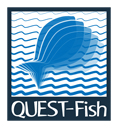Dataset
QUEST Fish: Global Coastal-Ocean Modelling System fish biomass estimates
Abstract
QUEST Fish was led by Dr Manuel Barange (PML) with 18 co-investigators from POL, PML, CEFAS, University of Plymouth, University of Portsmouth, CSIC (Spain), UEA, WorldFish Centre, IPSL, ICES (Denmark), Met Office, IRD (Paris) and University of North Carolina, as part of QUEST (Quantifying and Understanding the Earth System). QUEST-Fish specifically focused on the added impacts that climate change is likely to cause on global fish production, and on the subsequent additional risks and vulnerabilities to human societies.
This dataset contains global fish biomass estimates from the Global Coastal-Ocean Modelling System.
Details
| Previous Info: |
No news update for this record
|
|---|---|
| Previously used record identifiers: |
http://badc.nerc.ac.uk/view/badc.nerc.ac.uk__ATOM__ACTIVITY_320d79a4-020f-11e0-af69-00e081470265
|
| Access rules: |
Access to these data is available to any registered CEDA user. Please Login or Register for an account to gain access.
Use of these data is covered by the following licence: http://licences.ceda.ac.uk/image/data_access_condition/quest.pdf. When using these data you must cite them correctly using the citation given on the CEDA Data Catalogue record. |
| Data lineage: |
Data provided by post on CD from Dr Manuel Barange at the Proudman Oceanographic Laboratory, and stored at the BADC. |
| Data Quality: |
Not Known.
|
| File Format: |
Data are CSV formatted. For more information please refer to the README file
|
Related Documents
| QUEST Fish: module 1 |
| Geographic extent image |
Process overview
| Title | GCOMS - Global Coastal-Ocean Modelling System deployed on unknown computer |
| Abstract |
While shelf seas only occupy 7 percent of ocean area, shelf and coastal seas are regions of exceptionally high biological productivity, high rates of biogeochemical cycling and immense socio-economic importance. They are, however, poorly represented by the present generation of Earth system models, both in terms of resolution and process representation because of the small scale processes, such as currents, tides and mixing. In order to include a shelf sea area, such as the North Sea, researchers have needed to setup model domains from scratch; often spending months gathering and configuring the data for a new model domain. GCOMS developed an automated system to set up models of continental shelves anywhere on the planet, drawing on global data sets of such things as water depth, weather conditions, and river run off. This shortens the processes to a matter of minutes, allowing to quickly build models of the 60 or so shelf seas around the globe. Introduction The GCOM system provides a flexible framework to set up any number of regional models of the continental shelf over the globe (the figure bellow from Holt J et al. Phil. Trans. R. Soc. A 2009;367:939-951 shows an example), in a one-way nesting, using an independent larger scale OGCM to provide boundary conditions to all the coastal domains. The framework enables multiple regional model configurations to be generated from user-defined domain boundaries. These regional models can then be run either independently or with varying degrees of communication with neighbouring coastal domains. In the simplest mode of operation, domains can be run independently, each taking all lateral boundary conditions from the OGCM. Alternatively, one-way communication between domains allows limited connectivity, e.g. if water from domain X flows predominately northward into domain Y, we can use the solution from X to form the southern boundary conditions for Y. Finally, limited bidirectional interdomain communication can also be implemented. See linked documentaion for schematic of the model domains. A demonstration of concept was done using the Proudman Oceanographic Laboratory Coastal Ocean Modelling System coupled to the European Regional Seas Ecosystem Model - see linked documentation. Citation J.T. Holt, J.D. Harle, R. Proctor, S. Michel, C. Batstone, J.I. Allen, R. Holmes, T. Smyth, Who to contact (2010) Proudman Oceanographic Laboratory (POL), 6 Brownlow Street, Liverpool L3 5DA, United Kingdom |
| Input Description | None |
| Output Description | None |
| Software Reference | None |
No variables found.
Temporal Range
1864-01-01T00:00:00
2203-12-31T23:59:59
Geographic Extent
90.0000° |
||
-180.0000° |
180.0000° |
|
-90.0000° |

